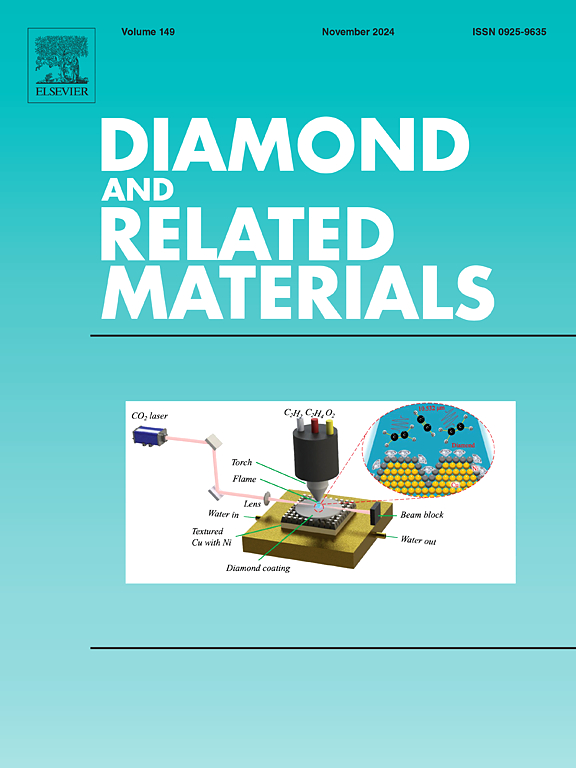α-Fe2O3/rGO composites for non-enzymatic electrochemical sensing of UA and Trp and mechanism study through DFT calculation
IF 4.3
3区 材料科学
Q2 MATERIALS SCIENCE, COATINGS & FILMS
引用次数: 0
Abstract
The abnormal contain of uric acid (UA) and tryptophan (Trp) in body could cause the liver and kidney function decline. The simultaneous detection of UA and Trp for early prevention of these liver and kidney diseases is significant. This study had developed the α-Fe2O3/reduced graphene oxide (rGO) for modification of the glassy carbon electrode (GCE) in (UA) and (Trp) detection. α-Fe2O3/rGO composite was synthesized through hydrothermal-calcination method. The optimal electrochemical conditions, including the pH values, scan rate, and accumulative parameters, were discussed for demonstrating the feasibility. Moreover, this α-Fe2O3/rGO/GCE presented wide linear relationships (0.01–900 μM) and low detection limits (UA (3.56 nM) and Trp (16.4 nM)). The DFT theoretical calculation revealed that the enhanced performance is mainly due to the high electrocatalytic property of α-Fe2O3 nanotube, high conductivity of rGO, and interaction effect between target biomolecule and modified electrode surface. Finally, the approving results were also acquired in detection of practical UA and Trp samples by α-Fe2O3/rGO modified GCE. The results indicate that α-Fe2O3/rGO could provide a new and highly advantageous approach for detection of UA and Trp.

α-Fe2O3/rGO复合材料对UA和色氨酸的非酶电化学传感及DFT计算机理研究
体内尿酸(UA)和色氨酸(Trp)含量异常可引起肝肾功能下降。同时检测UA和Trp对于早期预防这些肝脏和肾脏疾病具有重要意义。本研究开发了α-Fe2O3/还原氧化石墨烯(rGO)修饰的玻碳电极(GCE)用于(UA)和(色氨酸)检测。采用水热煅烧法制备α-Fe2O3/还原氧化石墨烯复合材料。讨论了最佳的电化学条件,包括pH值、扫描速率和累积参数,以证明该方法的可行性。α-Fe2O3/rGO/GCE具有较宽的线性关系(0.01 ~ 900 μM)和较低的检出限(UA (3.56 nM)和Trp (16.4 nM))。DFT理论计算表明,α-Fe2O3纳米管性能的增强主要是由于α-Fe2O3纳米管的高电催化性能、rGO的高电导率以及靶生物分子与修饰电极表面的相互作用。最后,α-Fe2O3/rGO修饰的GCE对实际样品的UA和色氨酸的检测也获得了满意的结果。结果表明,α-Fe2O3/rGO可以为UA和Trp的检测提供一种新的、非常有利的方法。
本文章由计算机程序翻译,如有差异,请以英文原文为准。
求助全文
约1分钟内获得全文
求助全文
来源期刊

Diamond and Related Materials
工程技术-材料科学:综合
CiteScore
6.00
自引率
14.60%
发文量
702
审稿时长
2.1 months
期刊介绍:
DRM is a leading international journal that publishes new fundamental and applied research on all forms of diamond, the integration of diamond with other advanced materials and development of technologies exploiting diamond. The synthesis, characterization and processing of single crystal diamond, polycrystalline films, nanodiamond powders and heterostructures with other advanced materials are encouraged topics for technical and review articles. In addition to diamond, the journal publishes manuscripts on the synthesis, characterization and application of other related materials including diamond-like carbons, carbon nanotubes, graphene, and boron and carbon nitrides. Articles are sought on the chemical functionalization of diamond and related materials as well as their use in electrochemistry, energy storage and conversion, chemical and biological sensing, imaging, thermal management, photonic and quantum applications, electron emission and electronic devices.
The International Conference on Diamond and Carbon Materials has evolved into the largest and most well attended forum in the field of diamond, providing a forum to showcase the latest results in the science and technology of diamond and other carbon materials such as carbon nanotubes, graphene, and diamond-like carbon. Run annually in association with Diamond and Related Materials the conference provides junior and established researchers the opportunity to exchange the latest results ranging from fundamental physical and chemical concepts to applied research focusing on the next generation carbon-based devices.
 求助内容:
求助内容: 应助结果提醒方式:
应助结果提醒方式:


